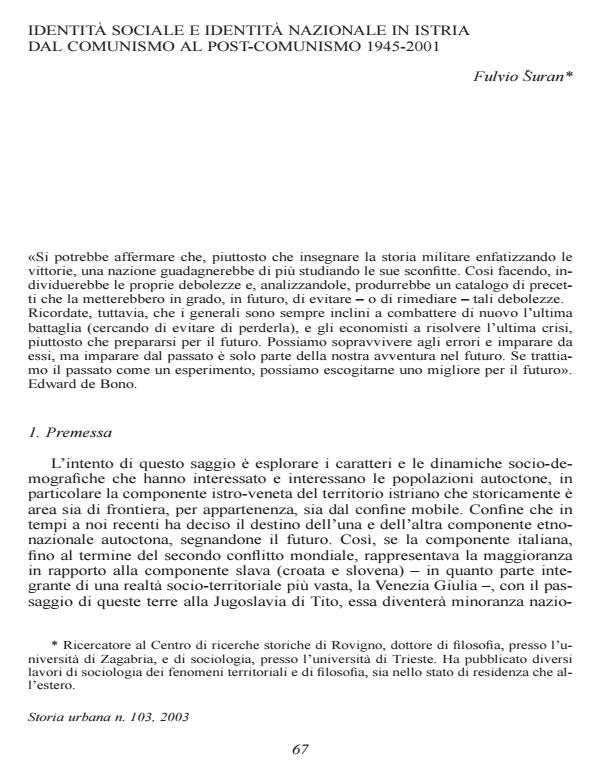Identità sociale e identità nazionale in Istria dal comunismo al post-comunismo 1945-2001
Journal title STORIA URBANA
Author/s Fulvio Suran
Publishing Year 2004 Issue 2003/103
Language Italian Pages 22 P. File size 149 KB
DOI
DOI is like a bar code for intellectual property: to have more infomation
click here
Below, you can see the article first page
If you want to buy this article in PDF format, you can do it, following the instructions to buy download credits

FrancoAngeli is member of Publishers International Linking Association, Inc (PILA), a not-for-profit association which run the CrossRef service enabling links to and from online scholarly content.
This essay looks into the trends and social dynamics that have affected and still affect the native population, especially the istro-venetian population of Istria, a territory that has always been an ethnically mixed area with a mobile border. In the recent past, that border determined the fate of the two autochthonous ethno-national components, altering their future. The Italian component outnumbered the Slav (Croat and Slovenian) population until the end of WW II, when Istria was still integral part of the wider region of Venezia-Giulia. After Tito’s Yugoslavia gained control over this area, the Italian community became a national minority unable to fit in the new social context, also because it was expected to serve as conveyor belt for Yugoslav socialism and populism. The study has no pretence of exhaustiveness; it intends to contribute to the dissemination of information on some distinctive traits and challenges that accompanied the changes in this border region. This survey may also provide some useful insights on the present situation. The most significant transformations of Istria in the last 50 years are also highlighted, with a special focus on the Italian component, considering it both as Italian community (of those who remained) and as Italian National Minority.
Fulvio Suran, Identità sociale e identità nazionale in Istria dal comunismo al post-comunismo 1945-2001 in "STORIA URBANA " 103/2003, pp , DOI: